Placa Dom Pedro IV (Rossio)
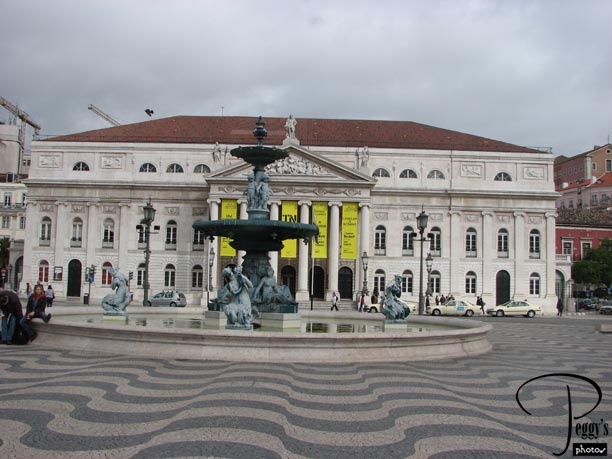
After eating an included–in–the–room–rate buffet breakfast at my hotel, I walked to the Placa Dom Pedro IV to meet an Inside Lisbon walking tour group. This photo shows the fountain in front of the Teatro Nacional Dona Maria II, built in 1840. Most of Lisbon’s buildings are post–1755. At 9:30 a.m. on All Saints Day, when the churches were crowded with worshippers, an estimated 8.9 earthquake struck Lisbon. The epicenter was off the coast of southern Portugal but the quake was felt all the way to Ireland. At least half of the city was destroyed by the quake, by the fire that raged after it, and by the three tidal waves hitting Lisbon. About 30,000 people were killed in Lisbon. However, under the leadership of the Marques de Pombal (1699–1782), the chief minister to King Jose I, Lisbon started to rebuild almost immediately.

Placa Dom Pedro IV (Rossio)
Placa Dom Pedro IV (Rossio)
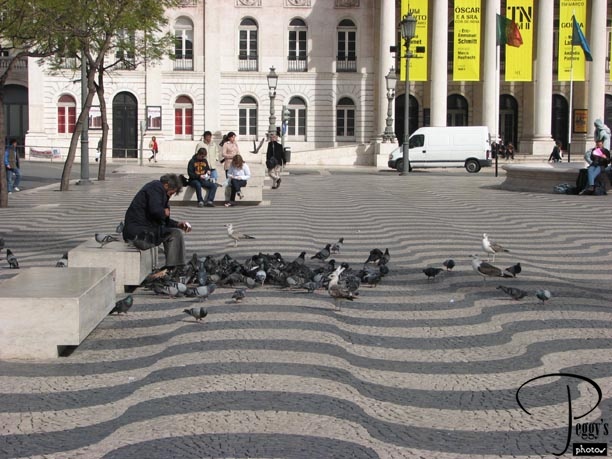
Man feeding the pigeons on the square. The wave pattern here was paved in the mid–19th century, causing it to be nicknamed the “Rolling Motion Square.” This was the first of the designs to the city’s sidewalks and squares.

Placa Dom Pedro IV (Rossio)
Placa Dom Pedro IV (Rossio)
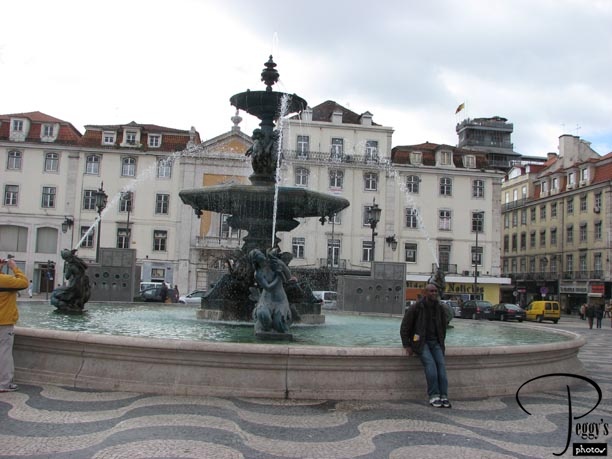
Looking in the opposite direction from the theatre, with the Elevador de Santa Justa at the right back of the photo.

Placa Dom Pedro IV (Rossio)
Placa Dom Pedro IV (Rossio)
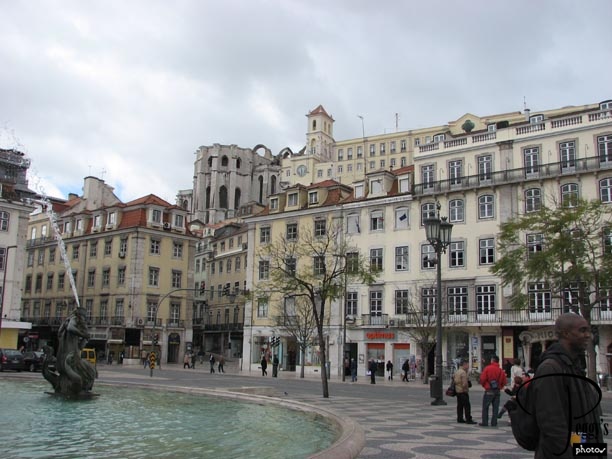
On the same side as the Elevador, you can see the arches of the Igreja do Carmo Church in the Bairro Alto.

Placa Dom Pedro IV (Rossio)
Placa Dom Pedro IV (Rossio)
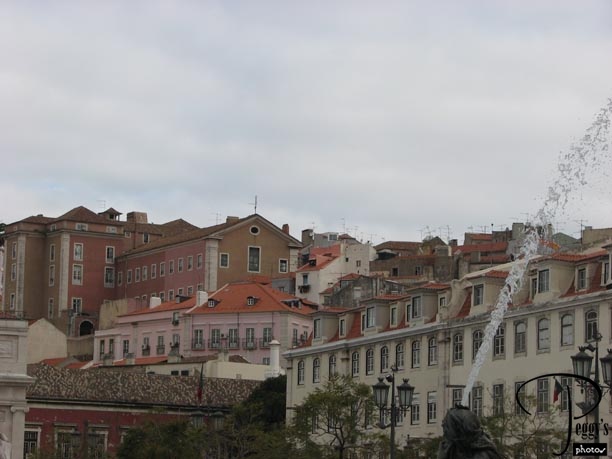
The hills going up to the Graca area seen on the opposite side.

Placa Dom Pedro IV (Rossio)
Map of Lisbon
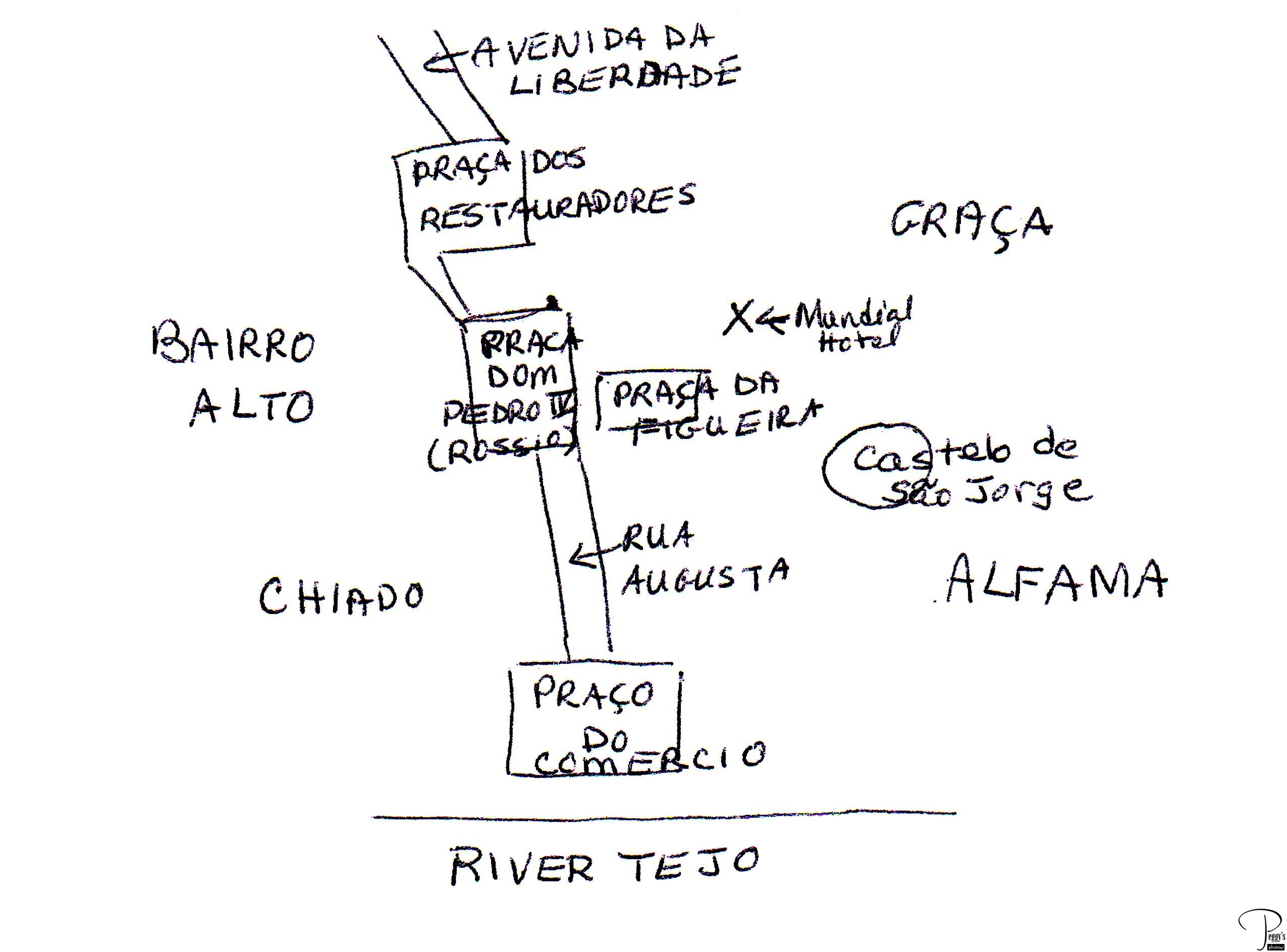
A very simplified map of the main tourist areas of Lisbon. The area in the middle of the map is known as Baixa and it is flat. On either side are very hilly areas: Bairro Alto, Chiado, Graca, and Alfama. To reach these areas, there are the Elevador, funiculars, trams, and taxis or via some very strenuous walking.

Map of Lisbon
Inside Lisbon Walking Tour
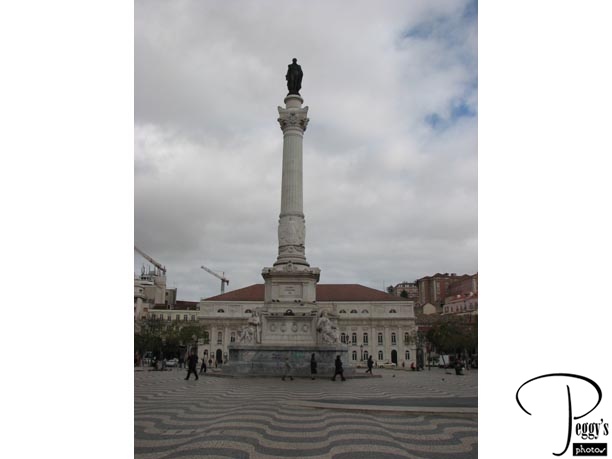
No reservations are needed for the Inside Lisbon walking tours––you just show up at the base of the statue of Dom Pedro IV. Check their website: www.insidelisbon.com for each day’s walking tours. Two were to be given today, both starting at 10 a.m.: the Old Lisbon Downhill Walk and The Original Lisbon Walk. Cost for each: 14 euros but a discount is given if you have a Lisboa (Lisbon in Portuguese) card or if you go on more than one tour. I was going on the downhill walk.

Inside Lisbon Walking Tour
Inside Lisbon Walking Tour
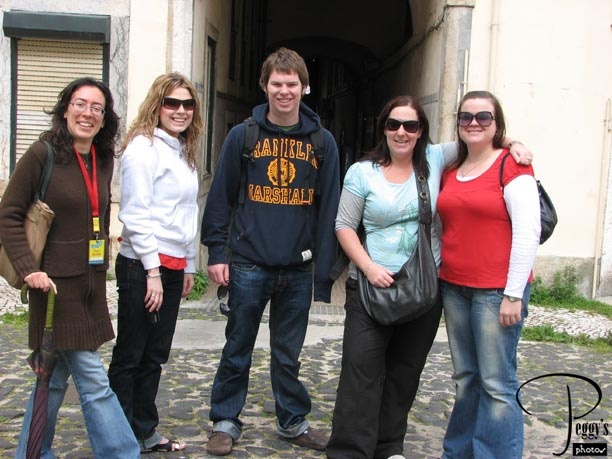
Hugo came by to tell me that the full–day tour that I wanted to go on this Monday was now a go as two more people had signed up for it (three people are required to run a full–day tour). He greeted me with two more Portuguese kisses––this is definitely a friendly tour company! Photo: Of my downhill walk tour group: Susy, our tour guide; the next two were students from Canada studying in London; and the two girls are the left were Australians working in London.

Inside Lisbon Walking Tour
Old Lisbon Downhill Walk
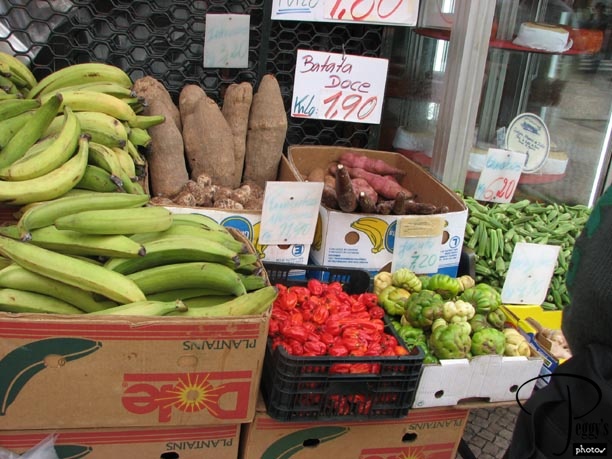
Starting our tour: We passed by this market that carried vegetables and fruit from Africa. This area is a meeting place for West Africans living in Lisbon.

Old Lisbon Downhill Walk
Old Lisbon Downhill Walk
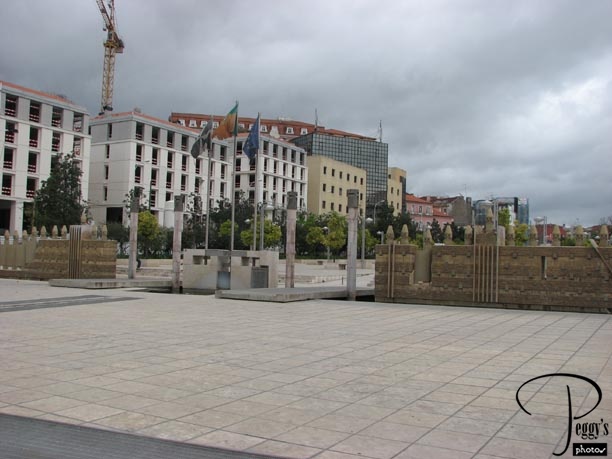
We walked to the front of my hotel, the Mundial, to view a commemorative wall, one that I do not know what it commemorates. From almost right in front of my hotel, we got in line to take Tram 18 up to the Graca area.

Old Lisbon Downhill Walk
Old Lisbon Downhill Walk
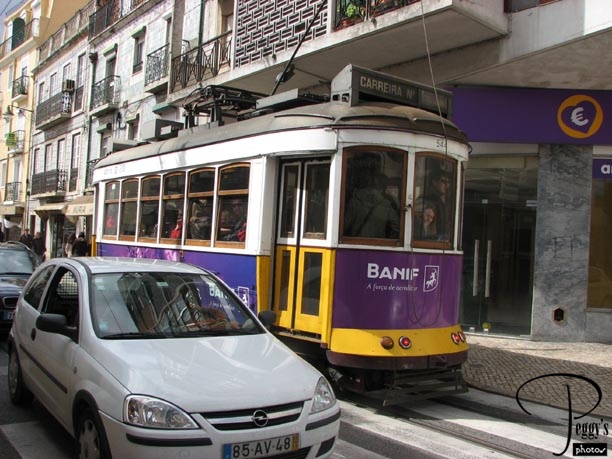
Photo of Tram 18.

Old Lisbon Downhill Walk
Old Lisbon Downhill Walk
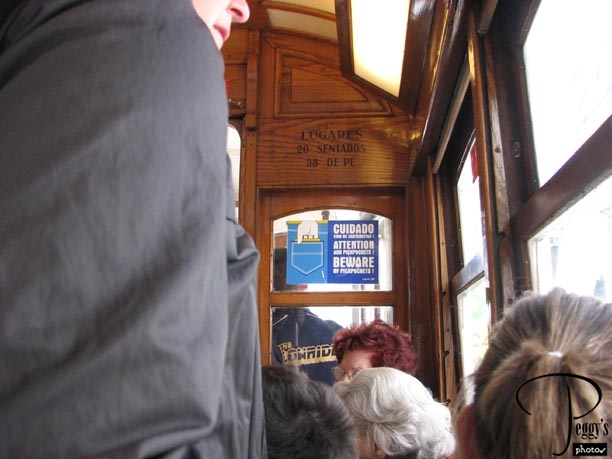
Tram 28 starts it run from the Mundial but to get a seat on it you need to wait awhile to be at the head of the line. You don’t want to have to stand up as it soon becomes jam–packed. Everytime you think the tram will hold no more passengers, more passengers are let on.

Old Lisbon Downhill Walk
Old Lisbon Downhill Walk

One of my guides in Lisbon told me that half of Tram 28’s passengers are tourists and the other half are pickpockets, so beware!

Old Lisbon Downhill Walk
Old Lisbon Downhill Walk
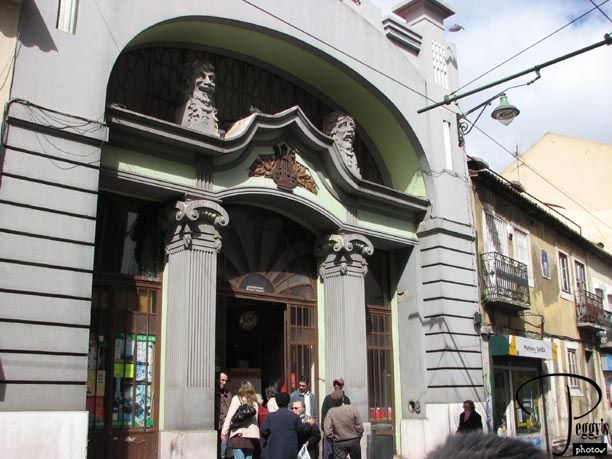
We got off the tram in Graca, which is a working–class area. Our first stop was at an art deco building that was once a movie theatre. It had shown the first talking movie in Lisbon.

Old Lisbon Downhill Walk
Old Lisbon Downhill Walk
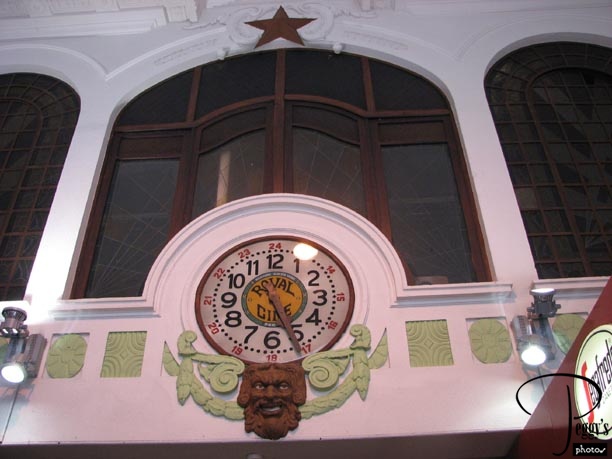
Art Deco clock inside the old theatre.

Old Lisbon Downhill Walk
Old Lisbon Downhill Walk

The old theatre is now a supermarket.

Old Lisbon Downhill Walk
Old Lisbon Downhill Walk
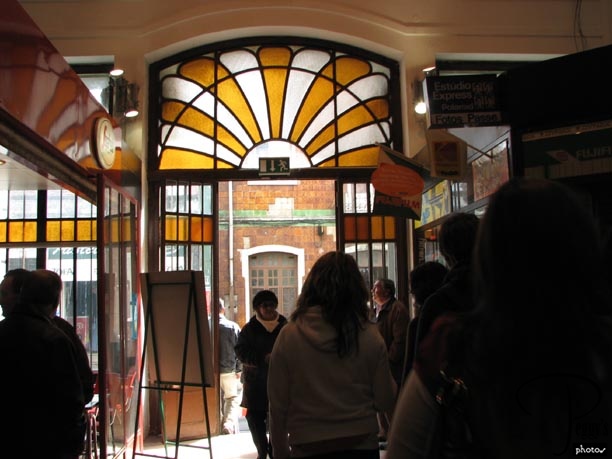
Leaving the “theatre.”

Old Lisbon Downhill Walk
Old Lisbon Downhill Walk
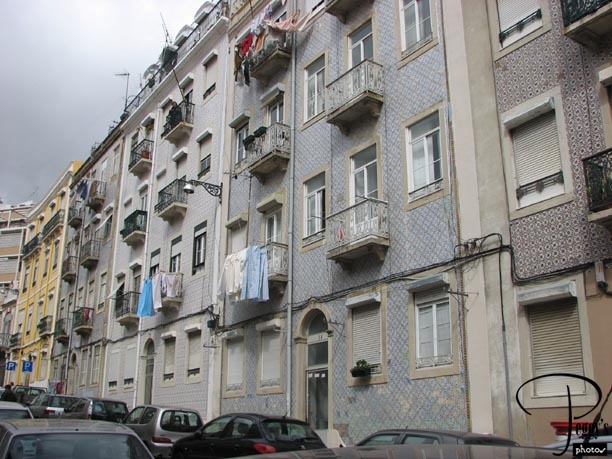
A row of houses, many of them with tiled fronts.

Old Lisbon Downhill Walk
Old Lisbon Downhill Walk
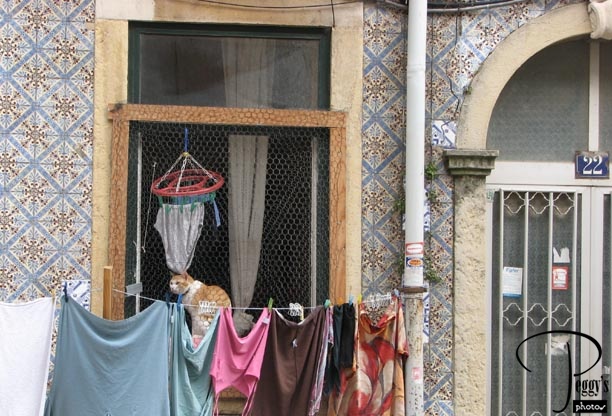
A cat in a window amid the laundry.

Old Lisbon Downhill Walk
Old Lisbon Downhill Walk
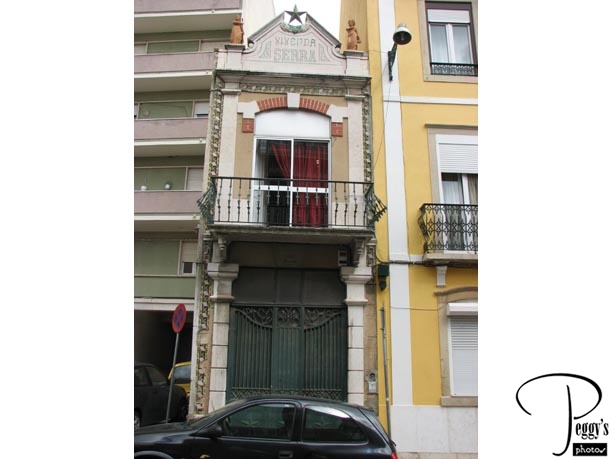
Susy said this is not the narrowest building in Lisbon.

Old Lisbon Downhill Walk
Old Lisbon Downhill Walk
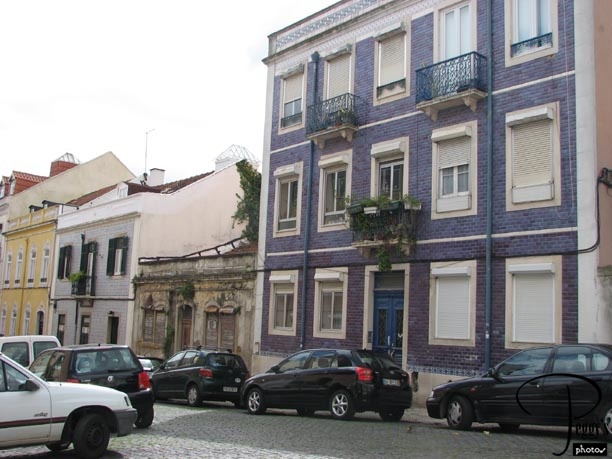
A very old building between two well–kept buildings. I was told that Portugal has a program both to keep their old buildings and structures and to fix them up. If building owners can prove they cannot afford to fix them up, the government will help them financially to do so.

Old Lisbon Downhill Walk
Old Lisbon Downhill Walk
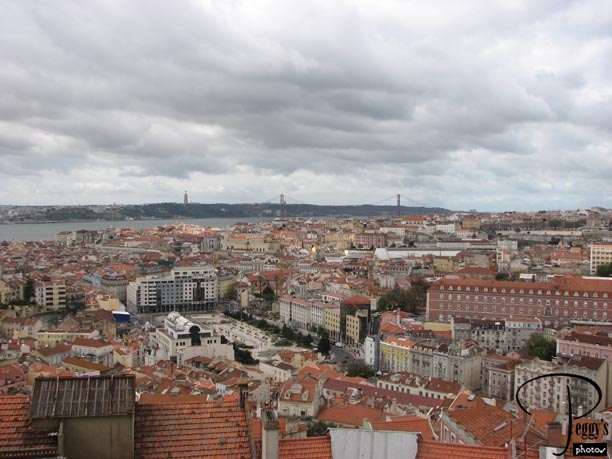
A bit more walking and we were at what I believe is the Miradoro da Senhora do Monte Viewpoint. Susy told us that this was the best of all Lisbon’s viewpoints. It was spectacular. You can see my hotel, the Mundial, at the left front of the photo (with the rectangular park in front of it). Across the River Tejo, on the hill, is the Cristo Rei statue. The bridge across the Tejo is the Ponte 25 de Abril.

Old Lisbon Downhill Walk
Old Lisbon Downhill Walk
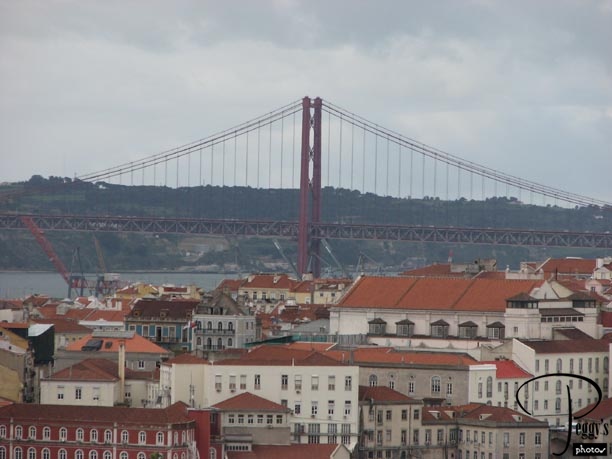
Closer–up view of the Ponte 25 de Abril. You may now be thinking that this bridge sure looks a lot like the Golden Gate Bridge in San Francisco––and it does. It was designed by the same company that built the Golden Gate and it was built to look similar to it (I had difficulty calling it anythng but the Golden Gate Bridge and kept thinking it was so odd to see it in Lisbon). Built in 1966, it was originally named the Salazar Bridge, after the dictator Salazar, but was renamed the Ponte 25 de Abril after the dictator was overthrown on the 25th of April, 1974.

Old Lisbon Downhill Walk
Old Lisbon Downhill Walk
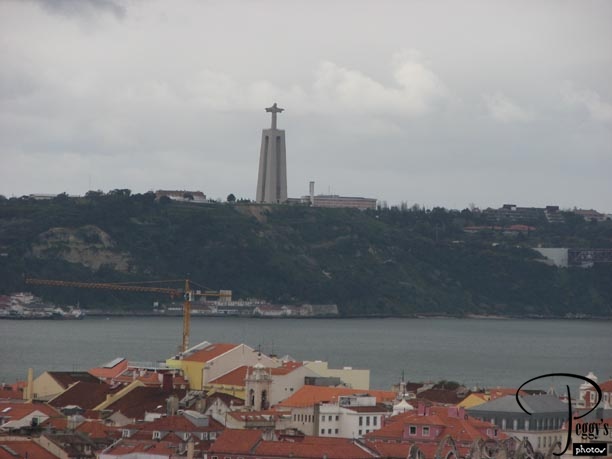
Close–up of the Cristo Rei statue. This was modeled after the Cristo Redentor statue in Rio de Janeiro. I visited the Cristo Rei two days later and will write more about it in a future album.

Old Lisbon Downhill Walk
Old Lisbon Downhill Walk
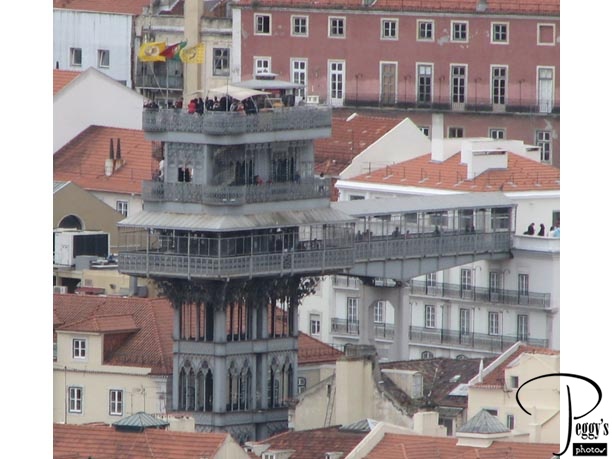
With my camera’s zoom lens, I took this photo of the Elevador de Santa Justa. The people at the top of the Elevador are having coffee, the cafe being reached by a winding staircase.

Old Lisbon Downhill Walk
Old Lisbon Downhill Walk
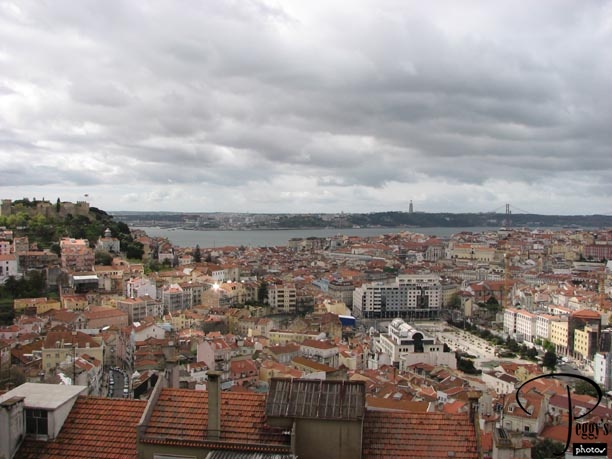
A view to the left. The Hotel Mundial is now in the right center of the photo. The Castelo de Sao Jorge is all the way on the left on top of the hill.

Old Lisbon Downhill Walk
Old Lisbon Downhill Walk
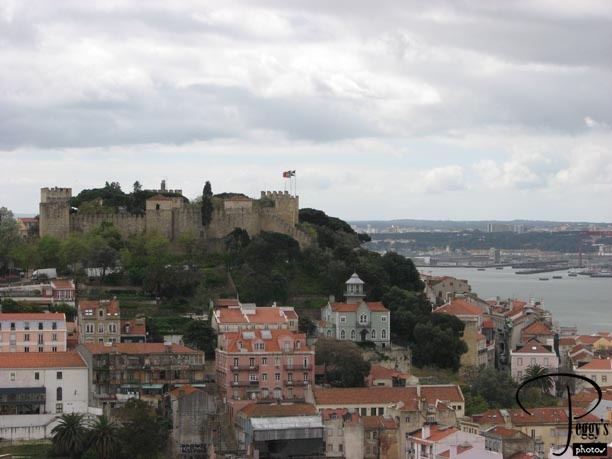
Closer–up view of the Castelo de Sao Jorge.

Old Lisbon Downhill Walk
Old Lisbon Downhill Walk
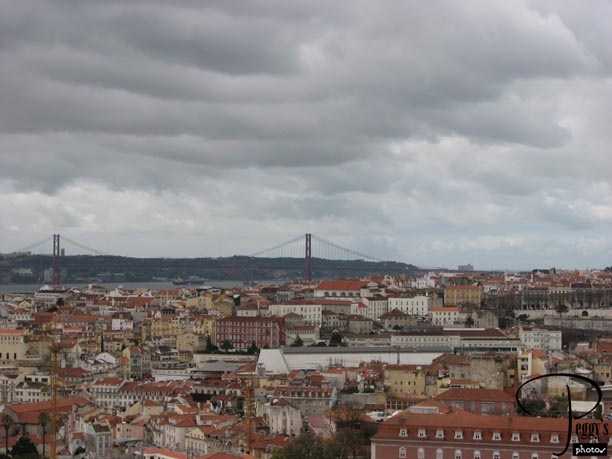
Onward through Graca.

Old Lisbon Downhill Walk
Old Lisbon Downhill Walk
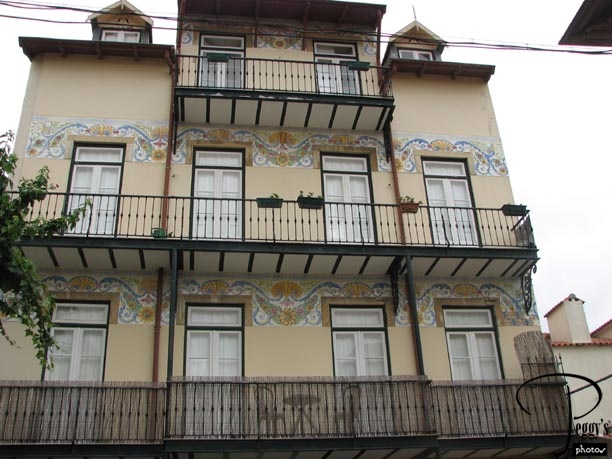
We passed this decorative house.

Old Lisbon Downhill Walk
Old Lisbon Downhill Walk
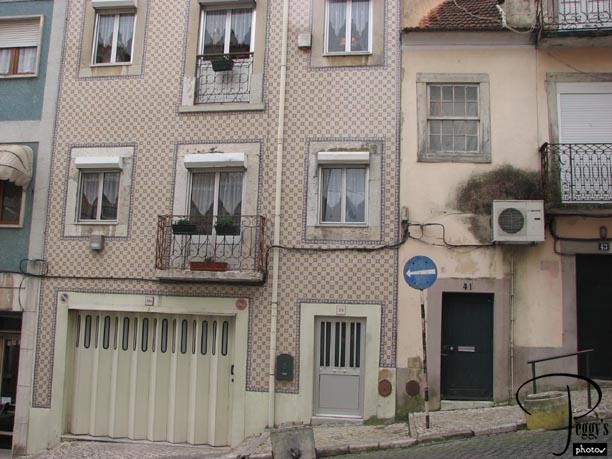
One well–kept house with a tiled front with one still needing work next door to it. You see this justaposition often in Lisbon (and elsewhere in Portugal), but it gives you a good idea of how Lisbon looked with numerous buildings needing TLC and how it will look in the future. But I liked the buildings needing care as well as I did those spruced up.

Old Lisbon Downhill Walk
Old Lisbon Downhill Walk
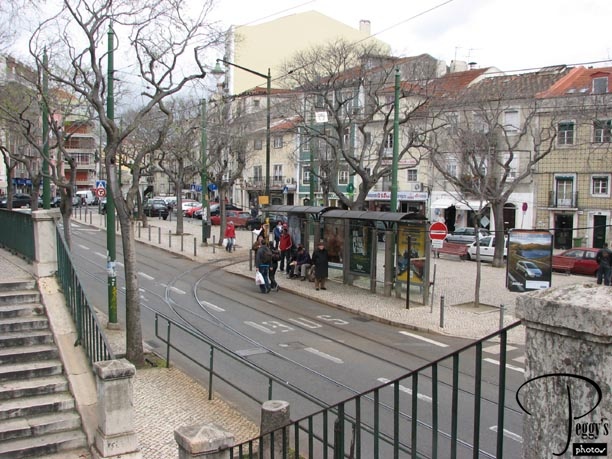
A pretty square.

Old Lisbon Downhill Walk
Old Lisbon Downhill Walk
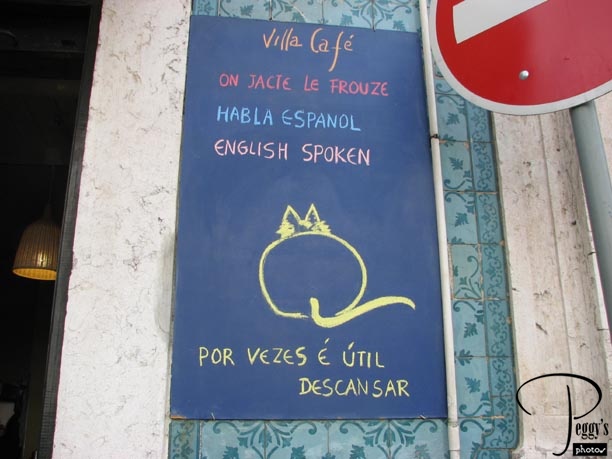
Many languages spoken at this cafe.

Old Lisbon Downhill Walk
Old Lisbon Downhill Walk
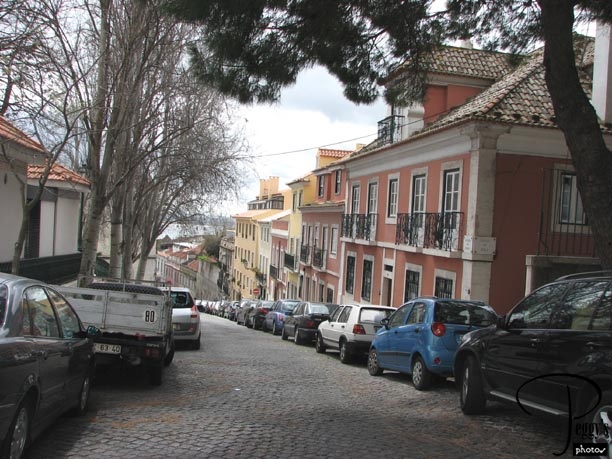
Farther along.

Old Lisbon Downhill Walk
Old Lisbon Downhill Walk
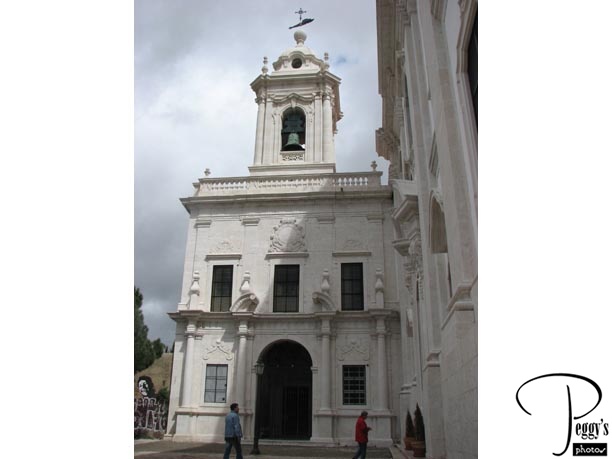
Probably the Convento Nossa Senhora da Graca.

Old Lisbon Downhill Walk
Old Lisbon Downhill Walk
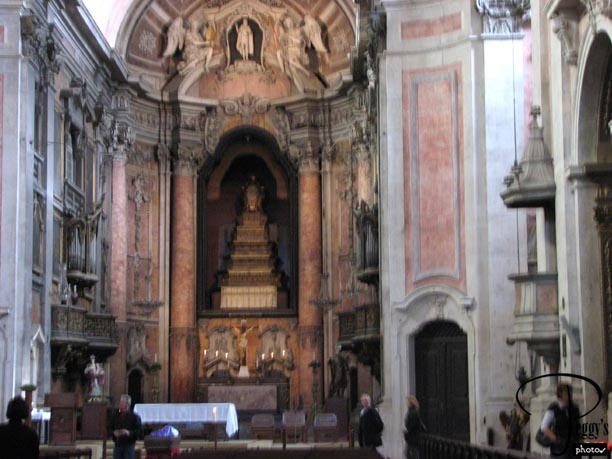
Inside the church.

Old Lisbon Downhill Walk
Old Lisbon Downhill Walk
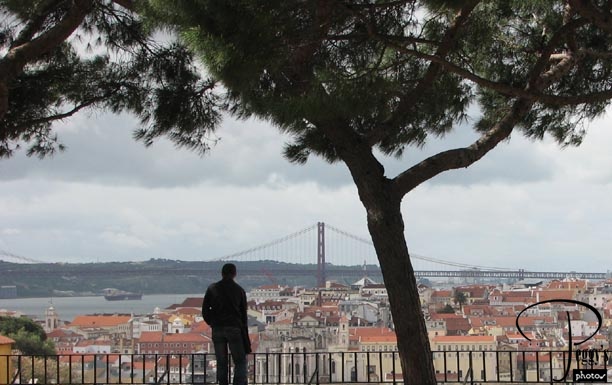
Viewpoint behind the church.

Old Lisbon Downhill Walk
Old Lisbon Downhill Walk
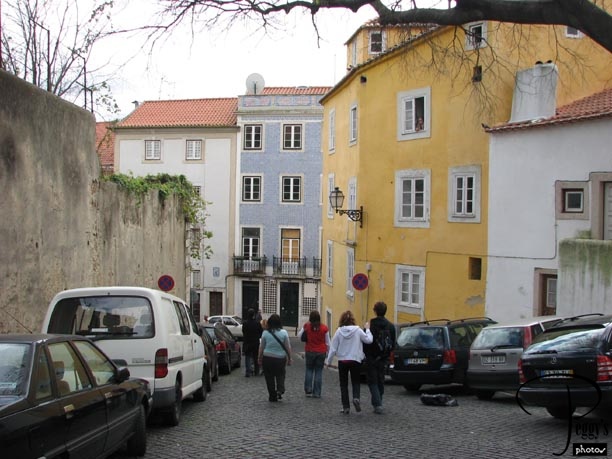
Farther along.

Old Lisbon Downhill Walk
Old Lisbon Downhill Walk
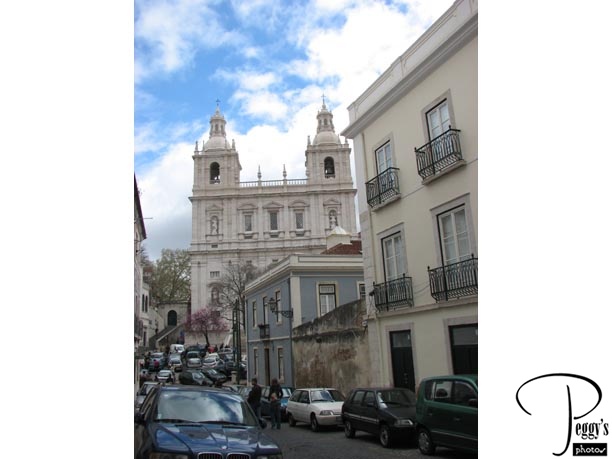
We are probably now in the Alfama area. The Sao Vicente de Fora church, completed in 1627 in the Italian Renaissance style. Its main dome and roof collasped on worshippers in the 1755 earthquake and it was later rebuilt.

Old Lisbon Downhill Walk
Old Lisbon Downhill Walk
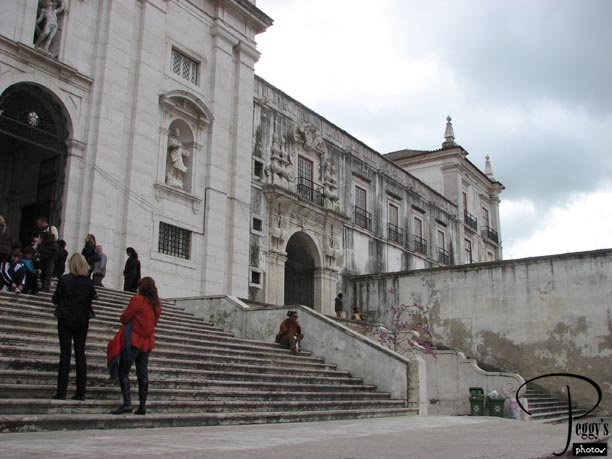
The monastery adjoining the Sao Vincente de Fora church. It is worth a separate visit to it to see its 14,521 blue and white tiles.

Old Lisbon Downhill Walk
Old Lisbon Downhill Walk
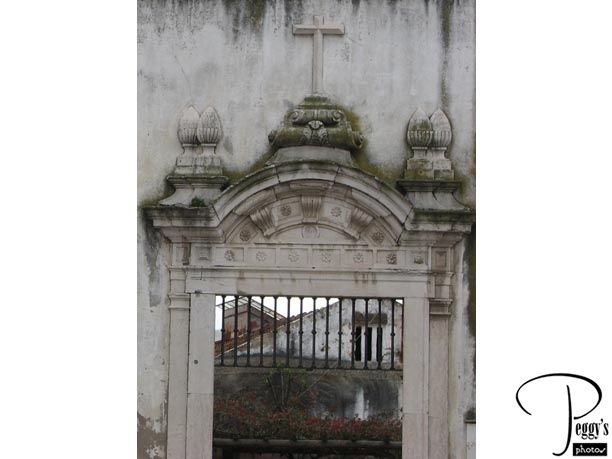
An entryway to the Sao Vincente de Fora church.

Old Lisbon Downhill Walk
Old Lisbon Downhill Walk
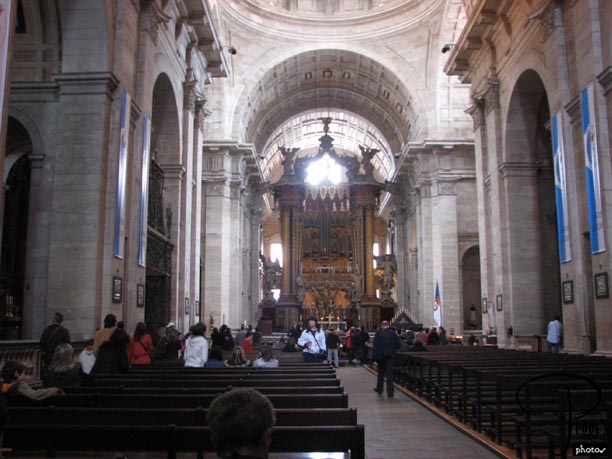
Inside the church.

Old Lisbon Downhill Walk
Old Lisbon Downhill Walk
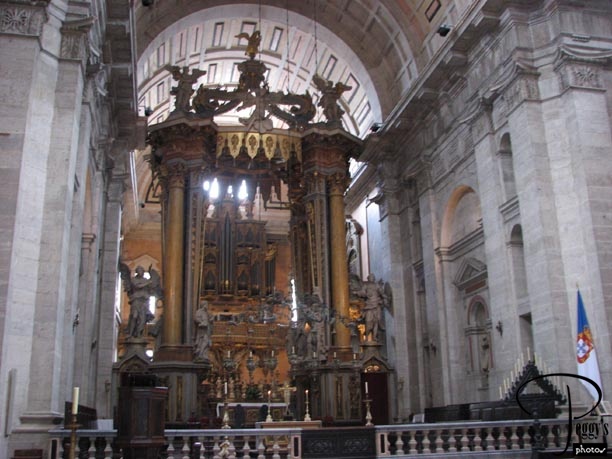
Closer–up view of the altar.

Old Lisbon Downhill Walk
Old Lisbon Downhill Walk
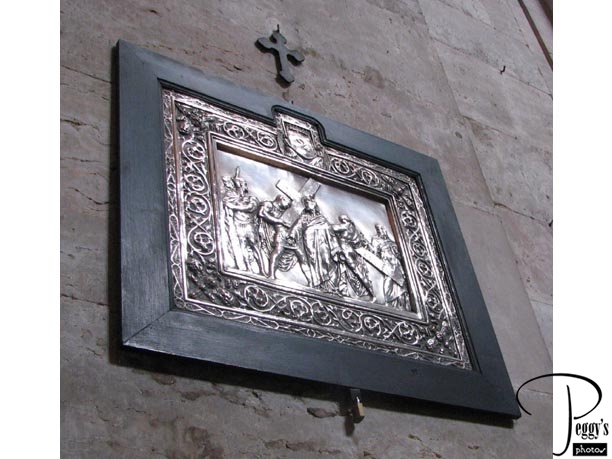
A Station of the Cross.

Old Lisbon Downhill Walk
Old Lisbon Downhill Walk
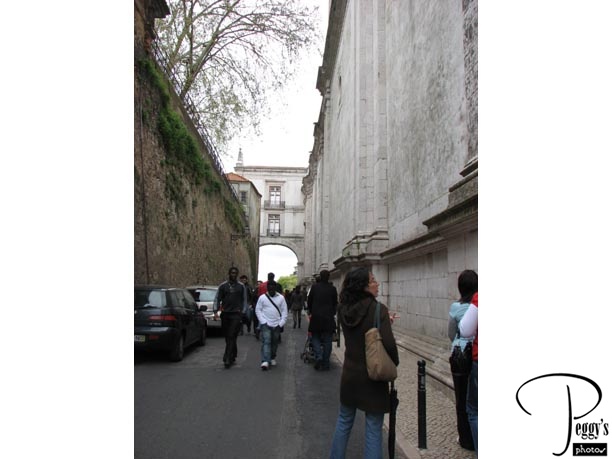
Onward.

Old Lisbon Downhill Walk
Old Lisbon Downhill Walk
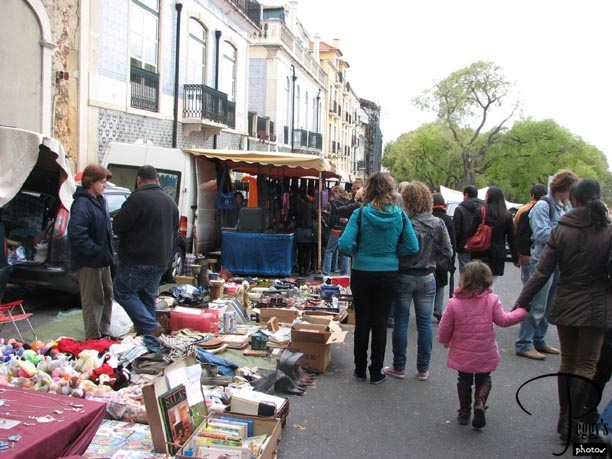
The Feirra da Ladra Flea Market at the Campo de Santa Clara in Alfama. The market goes all the way up and down a hill and is quite large. It is held on Tuesday and Saturday and offers merchandise such as new clothes and old clothes, Portuguese souvenirs, and a hodgepodge of almost everything.

Old Lisbon Downhill Walk
Old Lisbon Downhill Walk
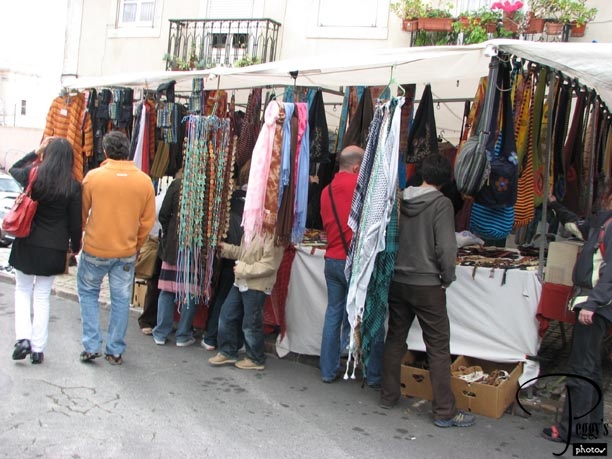
Booth at the Feira da Ladra Flea Market.

Old Lisbon Downhill Walk
Old Lisbon Downhill Walk

Tiles for sale at the flea market.

Old Lisbon Downhill Walk
Old Lisbon Downhill Walk
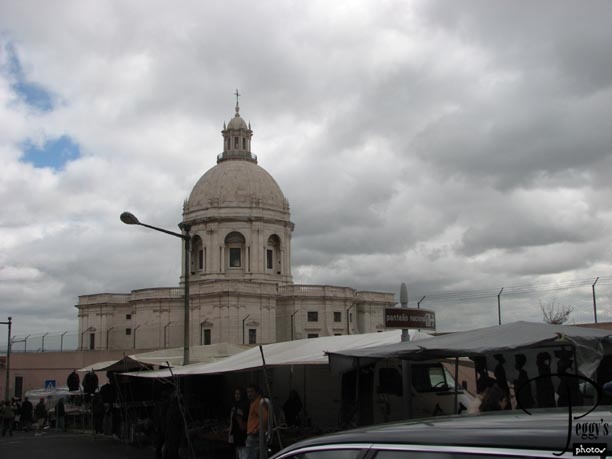
I didn’t feel like browsing the flea market, so I visited instead the nearby Panteao Nacional de Santa Engracia (the National Pantheon and Church of Santa Engracia), built in the Portuguese baroque style. In it are tombs of and memorials to Portuguese presidents and historic and important people. The most famous Fado singer Amalia is buried here.

Old Lisbon Downhill Walk
Old Lisbon Downhill Walk
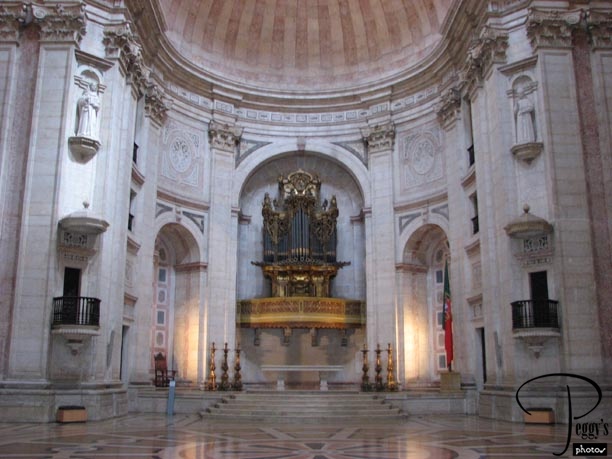
Inside the Pantheon. It reminds you much of the Pantheon in Rome.

Old Lisbon Downhill Walk
Old Lisbon Downhill Walk
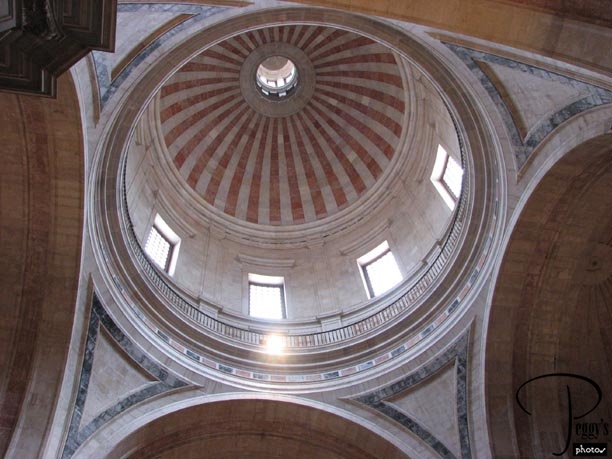
The inside of the dome of the Pantheon.

Old Lisbon Downhill Walk
Old Lisbon Downhill Walk
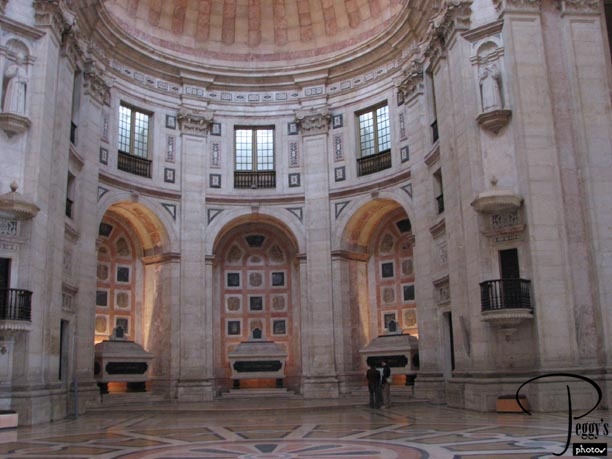
I believe that all three of these tombs are only commemorative, the actual burial places being elsewhere.

Old Lisbon Downhill Walk
Old Lisbon Downhill Walk
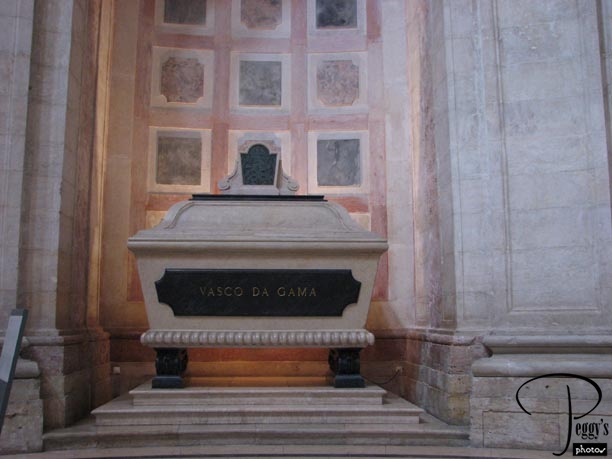
The commemorative tomb of Vasco da Gama (1469–1524), the famous Portuguese explorer who opened up the sea route to India. He is actually buried in Belem, just outside Lisbon.

Old Lisbon Downhill Walk
Old Lisbon Downhill Walk
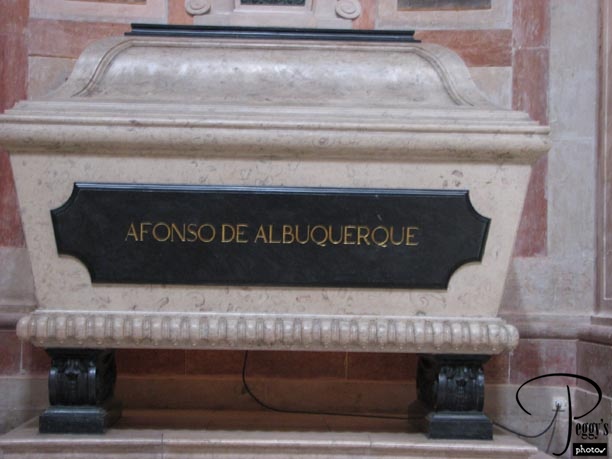
The commemorative tomb of Afonso de Albuquerque, which drew my attention because of his last name. At first, I was wondering if this was the Albuquerque whose name was given to the city of Albuquerque in New Mexico. No, that was the Spanish, not Portuguese, Duke of Albuquerque. Susy told me that Albuquerque is both a very common Portuguese and Spanish last name. This Alfonso de Albuquerque was considered a world conquest military genuis and is credited with establishing the Portuguese colonial empire in the Indian Ocean.

Old Lisbon Downhill Walk
Old Lisbon Downhill Walk
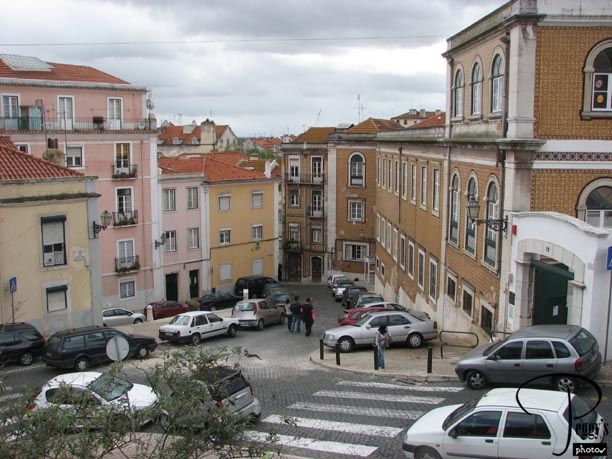
View from the steps of the National Pantheon.

Old Lisbon Downhill Walk
Old Lisbon Downhill Walk
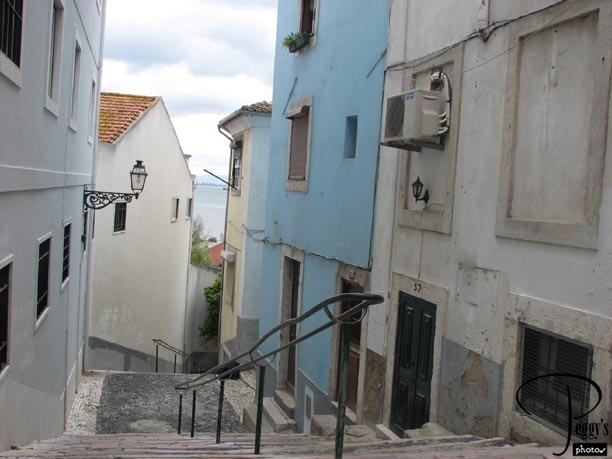
View of Alfama. Much of Alfama remains as it was pre–1755 earthquake as Alfama was built right into the rocks of the area.

Old Lisbon Downhill Walk
Old Lisbon Downhill Walk
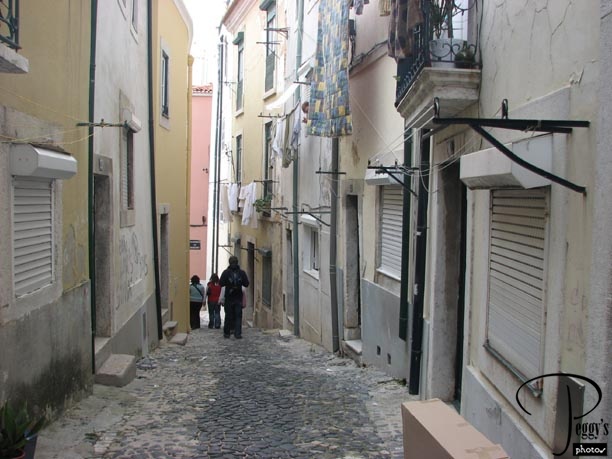
Another view––cobblestones and steep walkways.

Old Lisbon Downhill Walk
Old Lisbon Downhill Walk
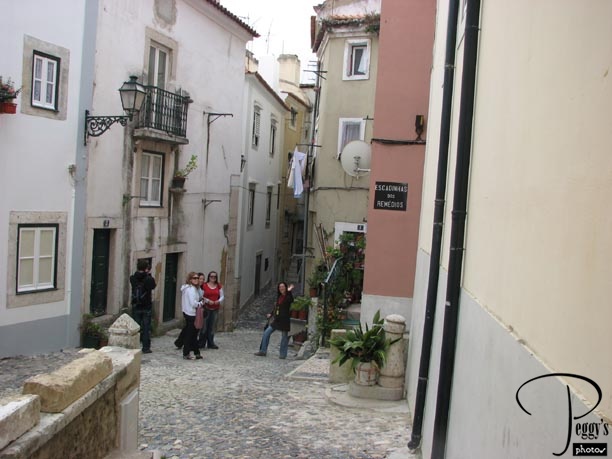
Are these people waiting for me to catch up? Yes, I am slow but I am also about twice as old as these youngsters and taking photos along the way makes me even slower. I also take care walking up or down all the old stone steps––my foot is still a bit weak from my gardening mishap in September and I also easily get vertigo. If the stairs have rails, I do fine by myself, and if they don’t, I am not hesitant to ask a lucky gentleman to hold my hand. Anyway, I soon caught up and we were again on our way.

Old Lisbon Downhill Walk
Old Lisbon Downhill Walk
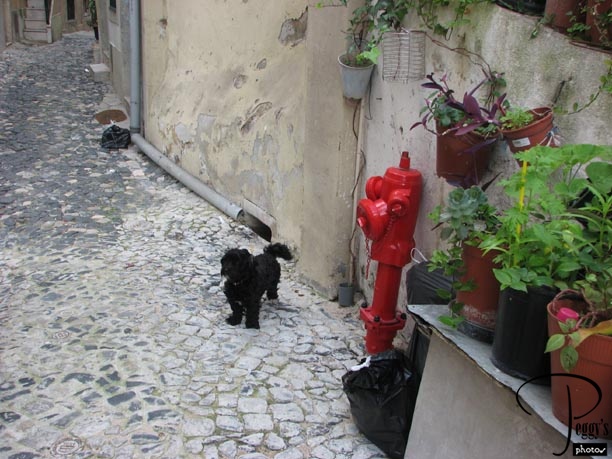
This little dog did not like us intruding into its space––or maybe it was just guarding its very own fireplug.

Old Lisbon Downhill Walk
Old Lisbon Downhill Walk
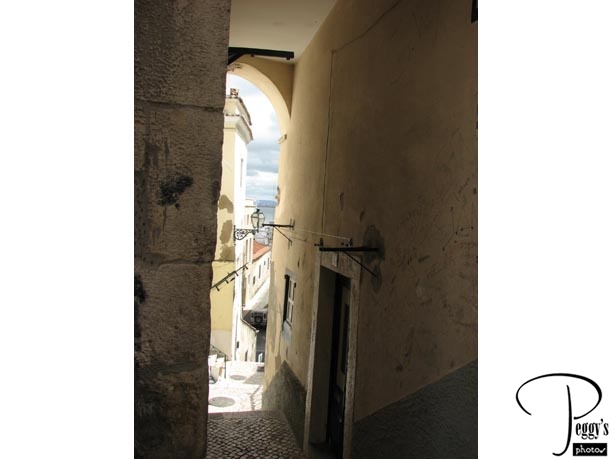
Looking down into an Alfama alley.

Old Lisbon Downhill Walk
Old Lisbon Downhill Walk
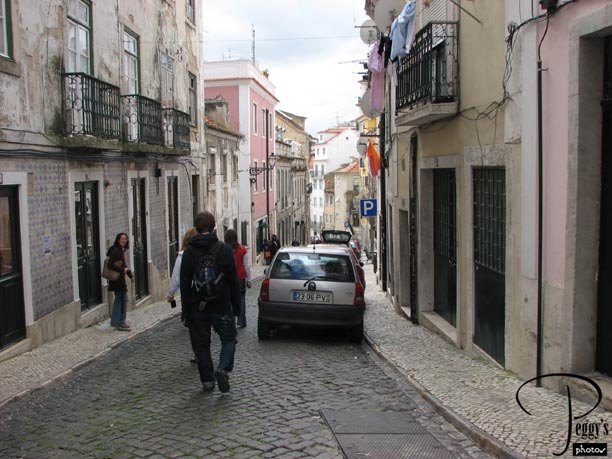
Now we are walking upward.

Old Lisbon Downhill Walk
Old Lisbon Downhill Walk
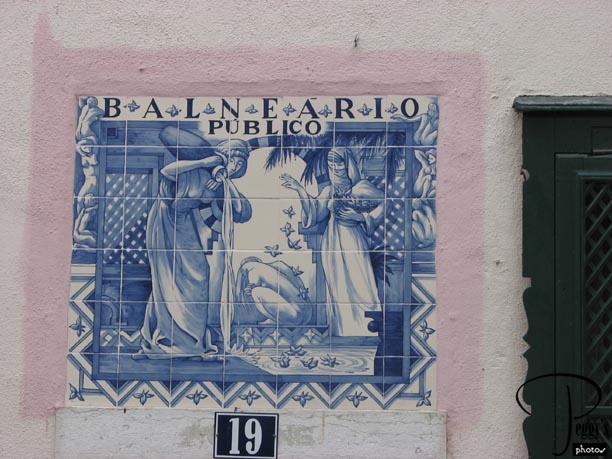
Outside house mural.

Old Lisbon Downhill Walk
Old Lisbon Downhill Walk
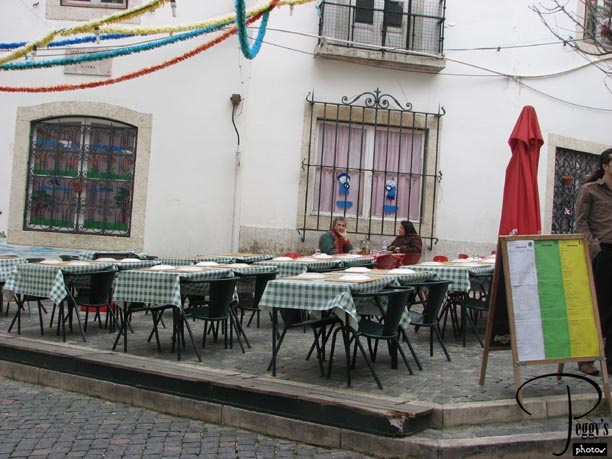
An Alfama cafe.

Old Lisbon Downhill Walk
Old Lisbon Downhill Walk
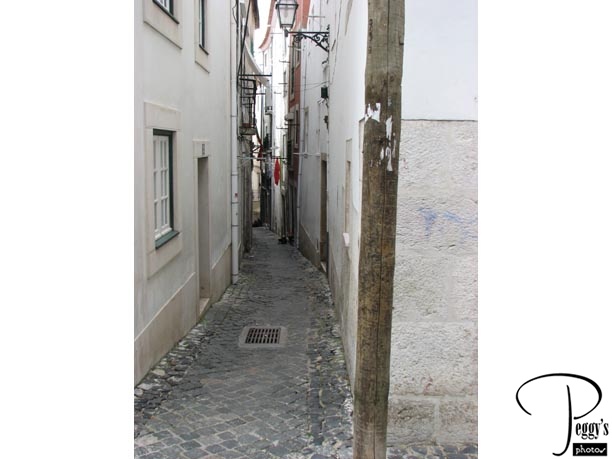
Another Alfama alley.

Old Lisbon Downhill Walk
Old Lisbon Downhill Walk
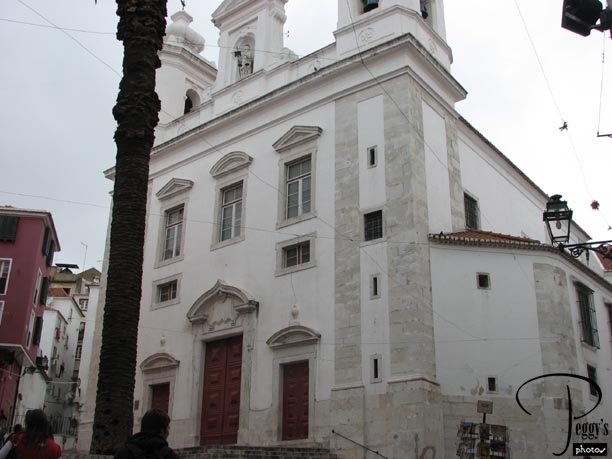
A church. You never know when walking this area what you will find at the next turn.

Old Lisbon Downhill Walk
Old Lisbon Downhill Walk
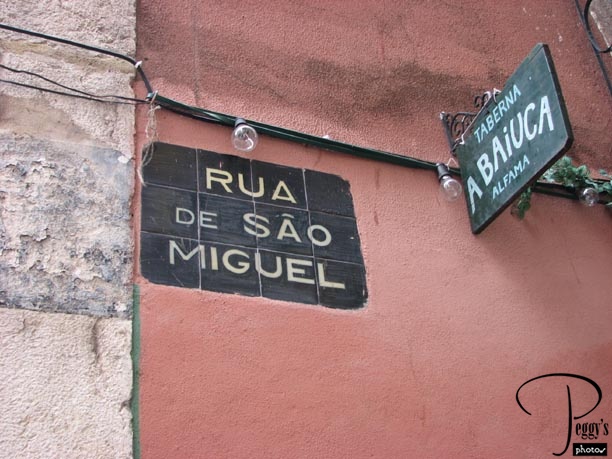
We are now on the Rua de Sao Miguel. Since I live on a San Miguel Road, I had a connection to this sign.

Old Lisbon Downhill Walk
Old Lisbon Downhill Walk
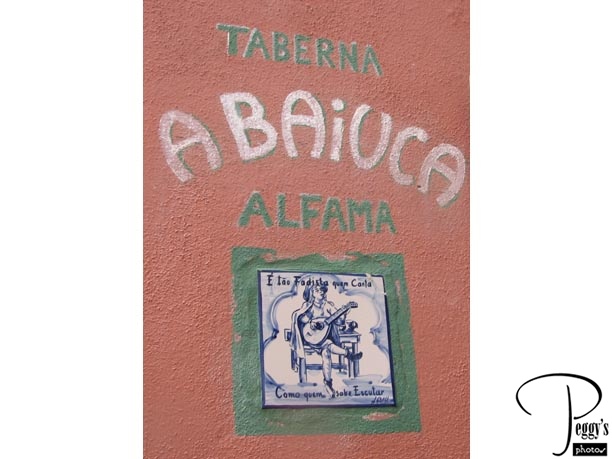
The Taberna Abaiuca is at the corner of Rua de Sao Miguel. It is a fado restaurant.

Old Lisbon Downhill Walk
Old Lisbon Downhill Walk
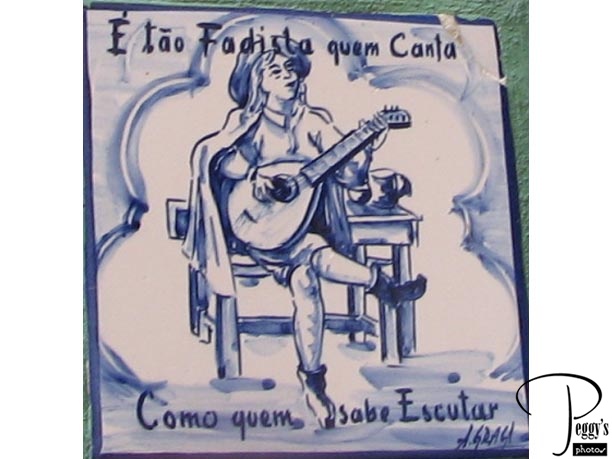
Close–up of the tile in the last photo.

Old Lisbon Downhill Walk
Old Lisbon Downhill Walk
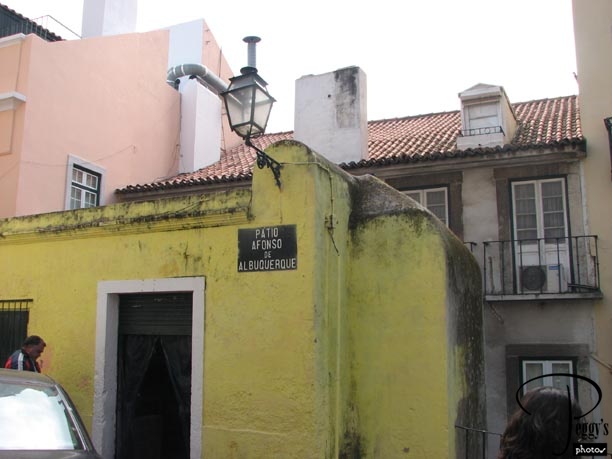
Here we see the name of Alfonso de Albuquerque again.

Old Lisbon Downhill Walk
Old Lisbon Downhill Walk
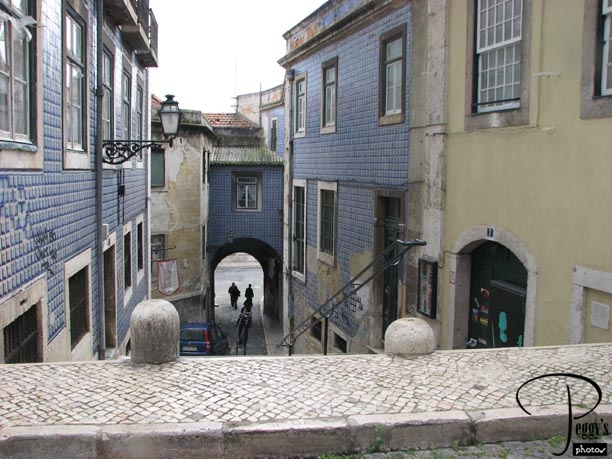
Are we going to walk down these steps. Thankfully no.

Old Lisbon Downhill Walk
Old Lisbon Downhill Walk
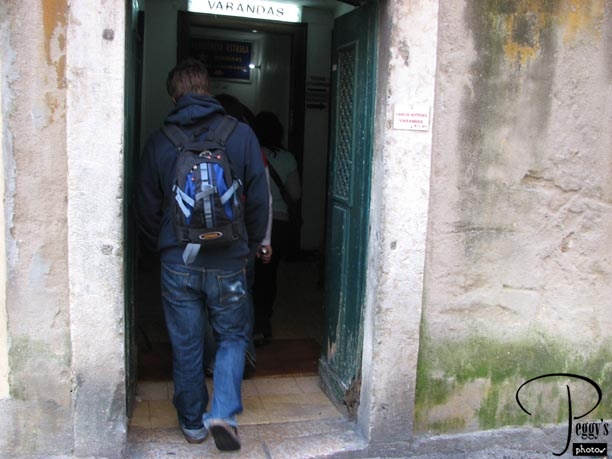
Instead, we entered this building and climbed down its secret passage to the street.

Old Lisbon Downhill Walk
Old Lisbon Downhill Walk
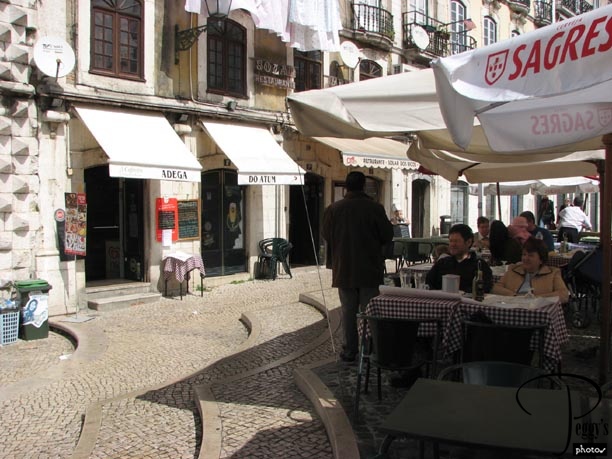
I think we exited through the fourth opening from the left.

Old Lisbon Downhill Walk
Old Lisbon Downhill Walk
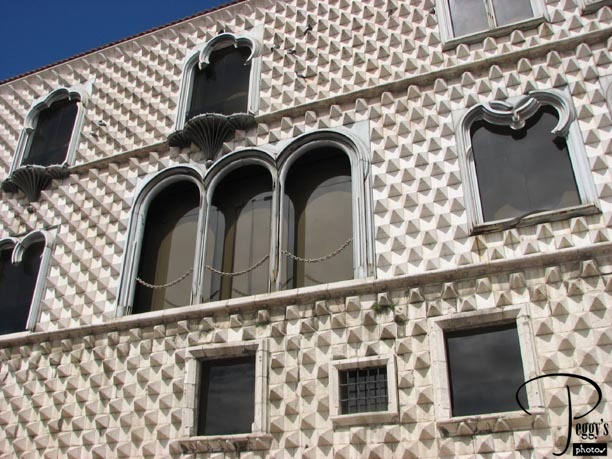
We walked past the stunning Casa dos Bicos with its diamond–shaped stones. It was built in 1523 of a style popular in Europe in the 16th century. The top two stories of the building were destroyed in the 1755 earthquake and were not restored until the 1980s.

Old Lisbon Downhill Walk
Old Lisbon Downhill Walk-Praca do Comercio
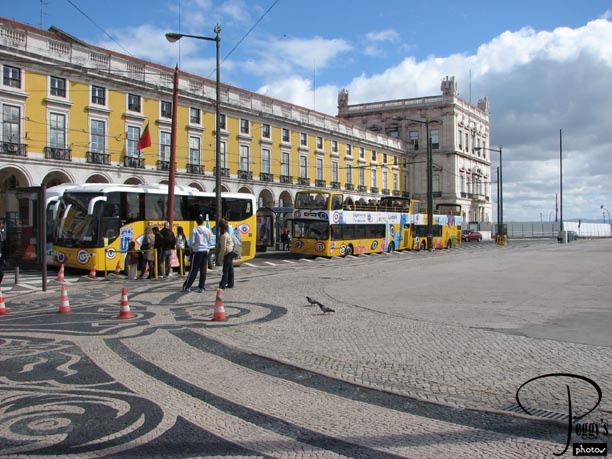
Our walk next took to the Praco do Comercio, bordering the River Tejo. The hop–on hop–off buses leave from here as well as other tour buses and trams.

Old Lisbon Downhill Walk-Praca do Comercio
Old Lisbon Downhill Walk-Praca do Comercio
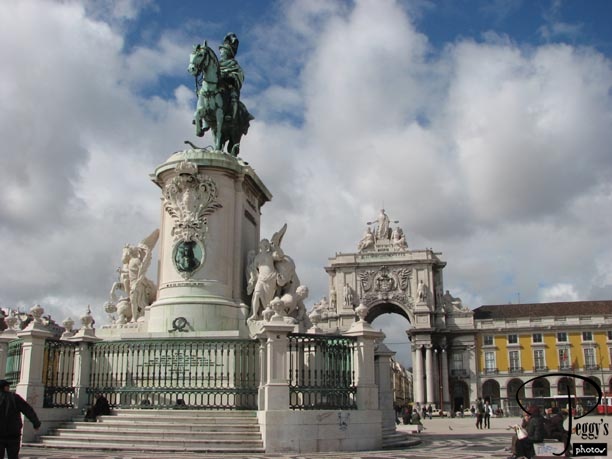
The statue of King Jose I in front of the triumphal arch. The buildings on the three sides of the square was once the royal palace. They have since been converted to government administrative offices.

Old Lisbon Downhill Walk-Praca do Comercio
Old Lisbon Downhill Walk-Praca do Comercio
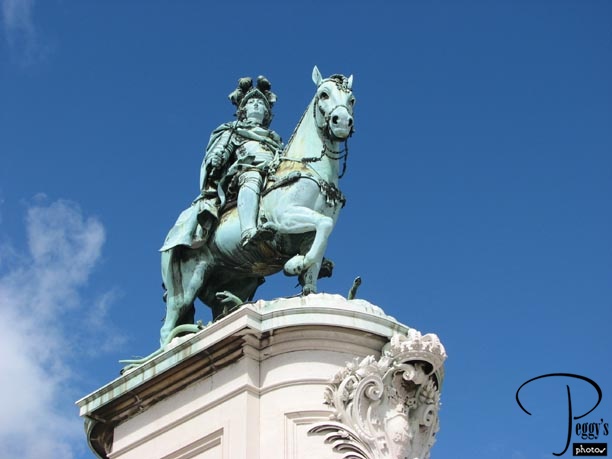
Close–up of the statue of King Jose I. This square is also called Black Horse Square as before the statue gots its green patina it was black.

Old Lisbon Downhill Walk-Praca do Comercio
Old Lisbon Downhill Walk-Praca do Comercio
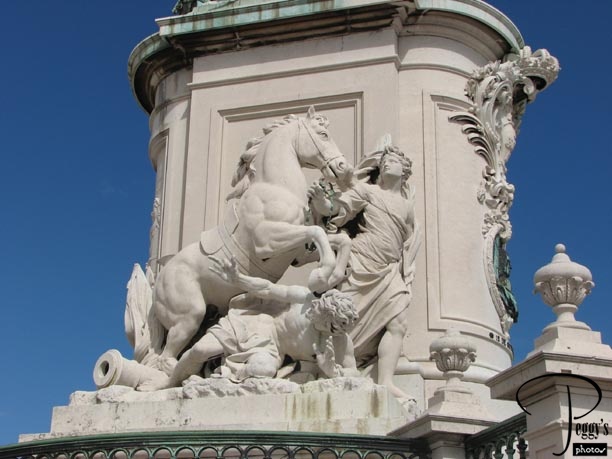
Close–up of the figures at the bottom of the statue.

Old Lisbon Downhill Walk-Praca do Comercio
Old Lisbon Downhill Walk-Praca do Comercio
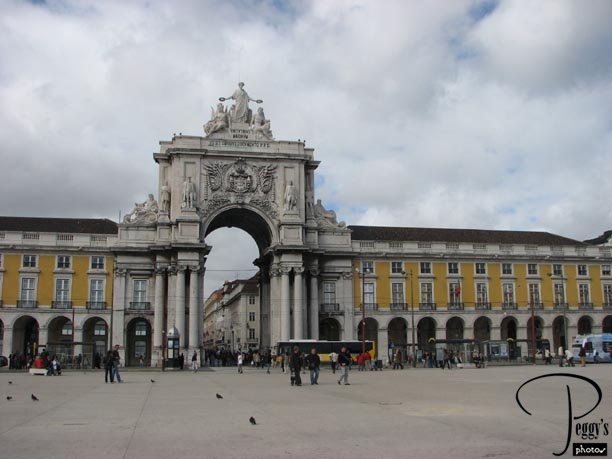
Through the arch is the Rua Augusta, the pedestrian street that would take you back from where the walking tour started.

Old Lisbon Downhill Walk-Praca do Comercio
Old Lisbon Downhill Walk-Praca do Comercio
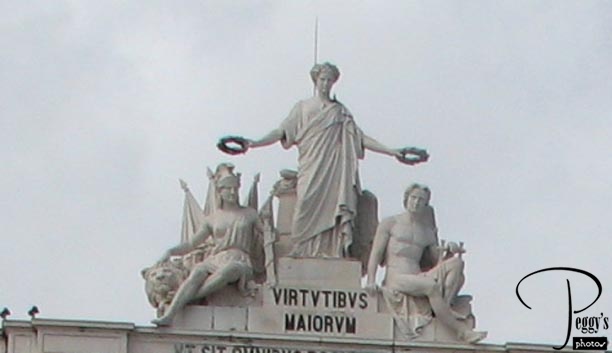
Close–up of the statues above the arch.

Old Lisbon Downhill Walk-Praca do Comercio
Old Lisbon Downhill Walk-Praca do Comercio
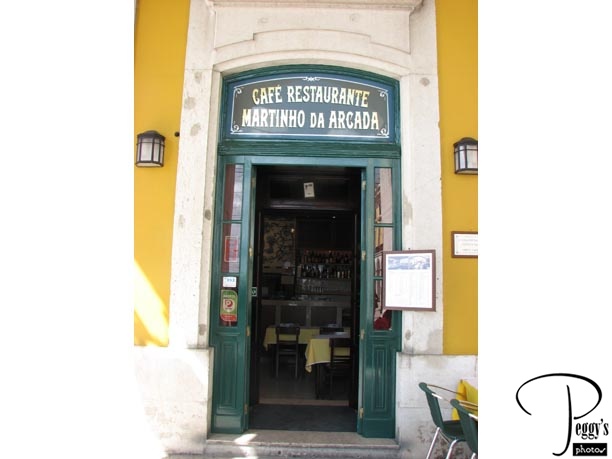
Susy pointed out the Cafe Martinho da Arcada in this square, which dates back to 1782. This was the end of the wonderful Old Lisbon Downhill Walk.

Old Lisbon Downhill Walk-Praca do Comercio
Praca do Comercio
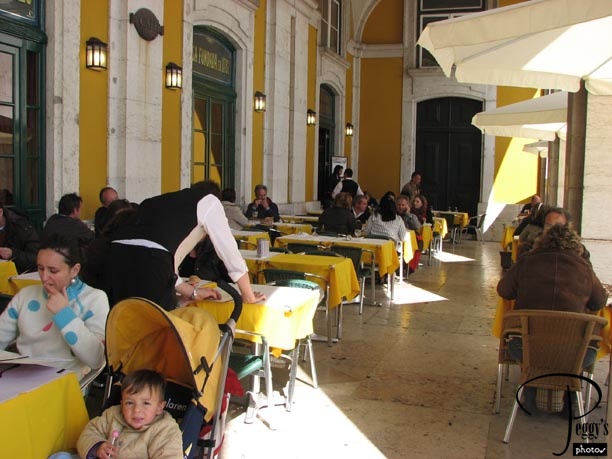
I ate lunch at one of the outside tables of this restaurant. I had shrimp with garlic (not spicy enough) for 13 euros; Diet Coke, 1,75 euros; and bread, .50 euros. I was also charged 3 euros for pate, which I questioned––that was for the two little pats of butter I spread on the bread. This was the only restaurant where I was charge for butter. I really wanted to eat a sandwich for lunch and I didn’t realize until later that restaurants in Portugal do not serve sandwiches––you need to go to a cafe or a pastry shop.

Praca do Comercio
Praca do Comercio
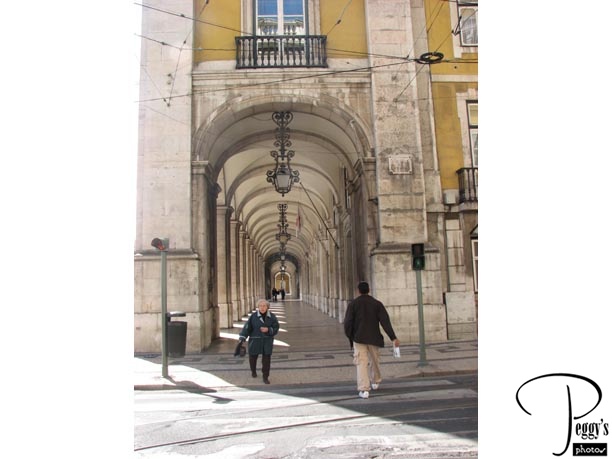
I went to find a taxi and walked through this colonade of the original royal palace.

Praca do Comercio
Praca do Comercio
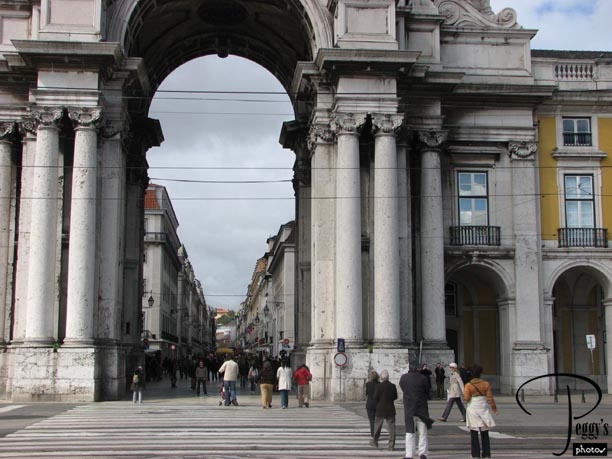
And past the entrance to the Rua Augusta.

Praca do Comercio
National Tile Museum
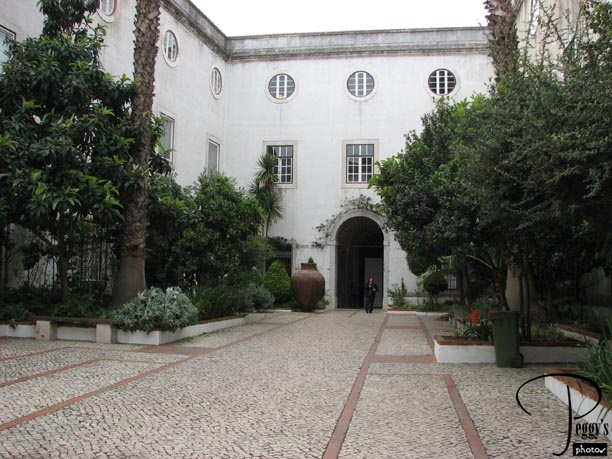
I found the taxi stand and asked the first taxi driver to take me to the National Tile Museum (about three miles from where I was). He couldn’t understand where I wanted to go. The second taxi driver couldn’t either, making me realize that I would have to give the Portuguese name of the museum to the driver: the Museu Nacional do Azulejo (the word azuelejo comes the Arabic “al zulaycha” or “zuleija,” meaning little polished stone). I found that whenever I took a taxi in Portugal it was wise to write out the name of my destination in Portuguese to hand to the driver. Photo: Entrance to the National Tile Museum.

National Tile Museum
National Tile Museum
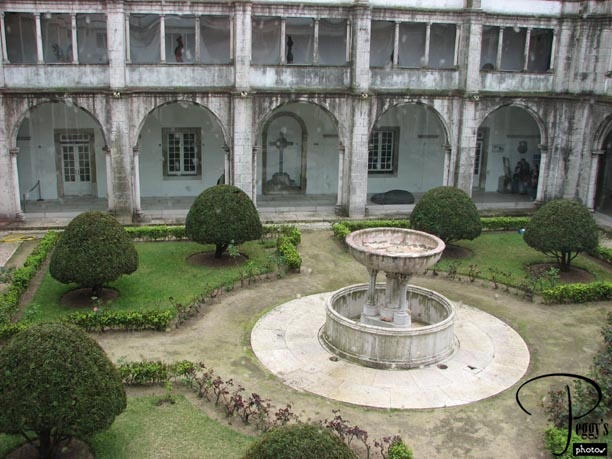
The National Tile Museum (Museu Nacional do Azulejo) is located in the Convento da Madre de Deus. Photo of its courtyard. I was glad that I decided to go here as all of a sudden we were hit by a heavy Lisbon rain shower.

National Tile Museum
National Tile Museum
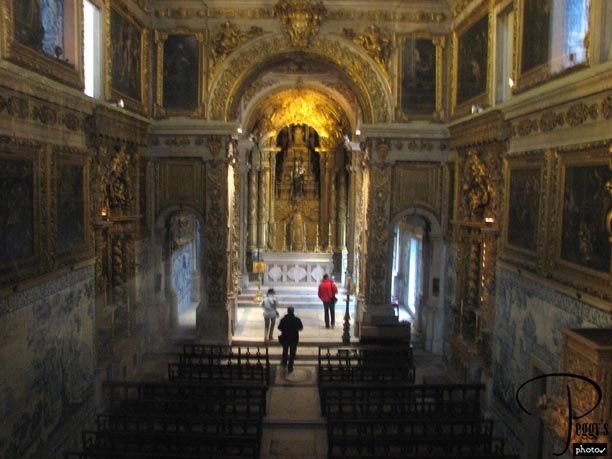
The Madre de Deus church in the convent, completed in the mid–16th century. Its very ornate decoration was added two centuries later. When you walk into this church, all you can say is that it is incredible, it takes your breath away. Besides from the amount of gold gilding in it, where you usually see marble on the walls, here there were blue and white tile murals.

National Tile Museum
National Tile Museum
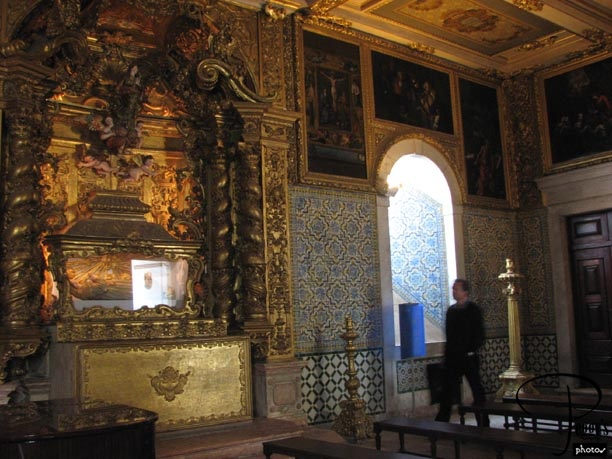
More of the church.

National Tile Museum
National Tile Museum
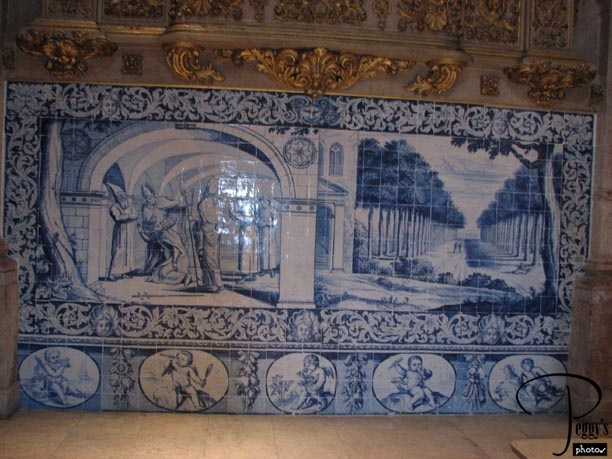
The tile murals.

National Tile Museum
National Tile Museum
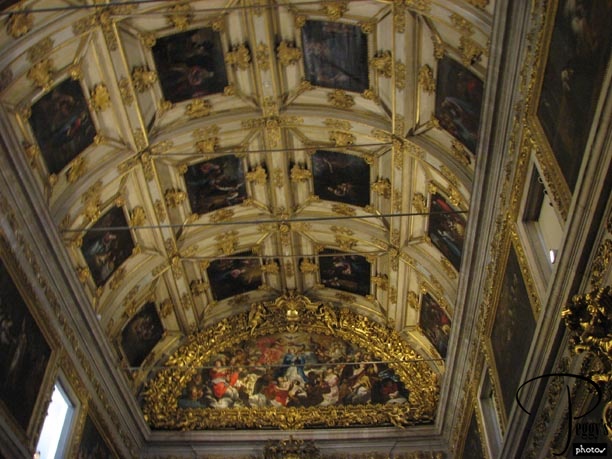
The ceiling.

National Tile Museum
National Tile Museum
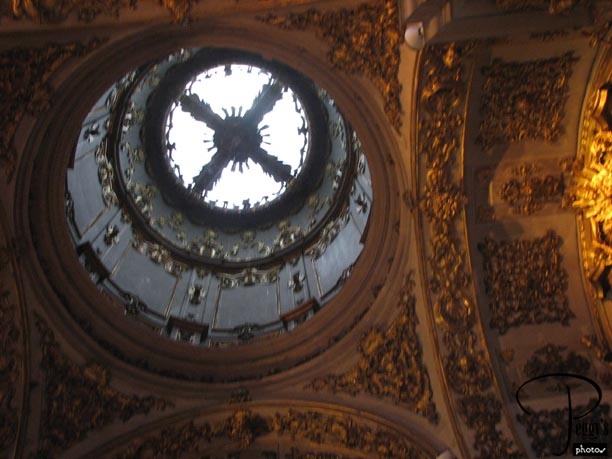
Inside the dome.

National Tile Museum
National Tile Museum
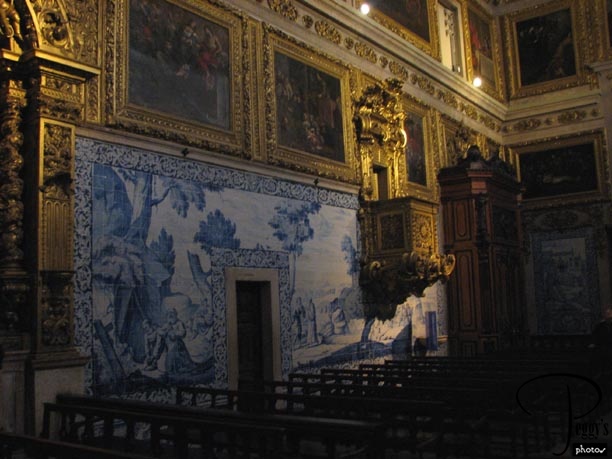
Another view.

National Tile Museum
National Tile Museum
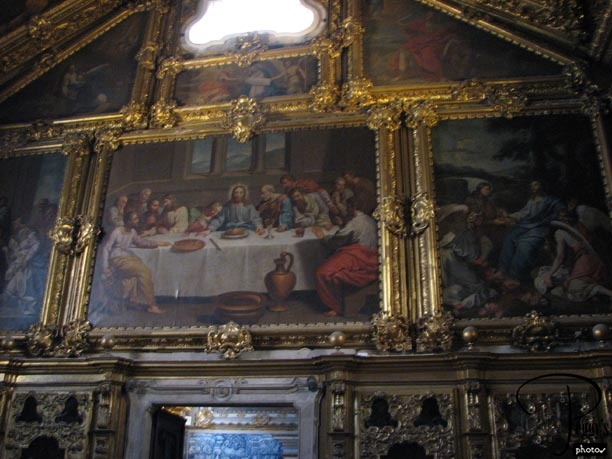
The Last Supper painting.

National Tile Museum
National Tile Museum
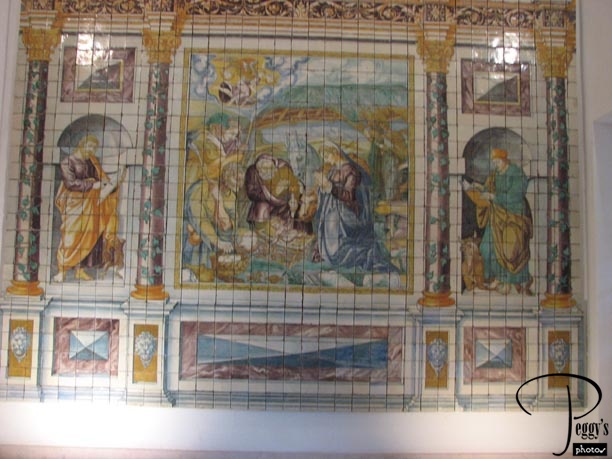
The tile museum took up three floors. There were walls of tiles, tiled stairways, tiled corridors, single tiles, very old tiles dating back to the 16th century, modern tiles, etc., etc. I have put my photos of the tiles of the National Tile Musuem on a separate slide show: Go to My Slide Shows, Western Europe, Portugal, “Lisbon: National Tile Museum.” Photo: One of the tile murals.

National Tile Museum
Fado Show and Dinner
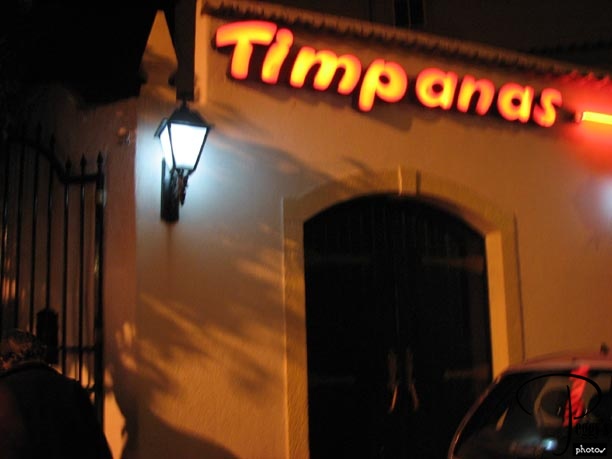
I took a taxi back from the museum to my hotel and got ready to go on a Lisbon by Night with Fado Singing and Dinner tour. After a drive around Lisbon at Night (too hard to take good photos on a night bus tour, but it was quite beautiful) we went to the Timpanas Fado restaurant, somewhere in the Belem area.

Fado Show and Dinner
Fado Show and Dinner
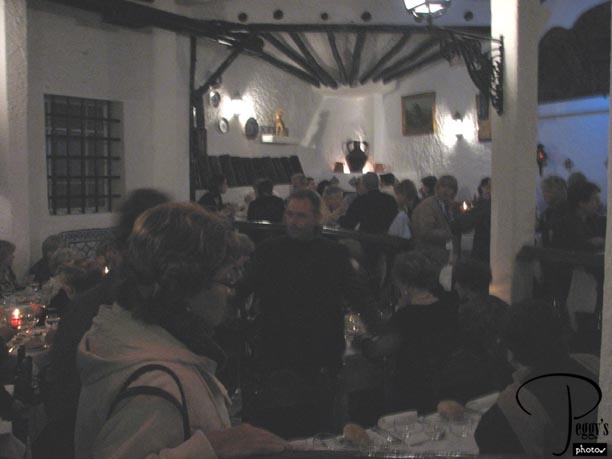
Inside Timpanas. At my table sat a woman from Israel traveling with a couple from Budapest, a French Swiss man, a Swiss couple––one from the Romansh–speaking part of Switzerland (St. Moritz) and one from the German–speaking part (they had gotten married in Montecito, CA), and a couple from Spain. Everyone at the table spoke in English, thankfully English having become the unofficial second language of Europe.

Fado Show and Dinner
Fado Show and Dinner
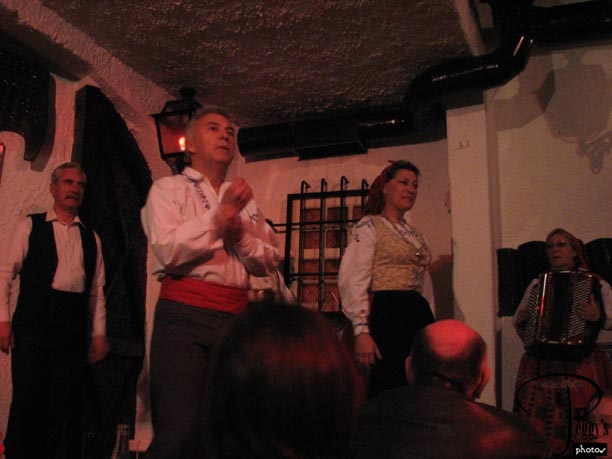
The show consisted of both Portuguese folk dancers and singers and three fado singers. Fado is the national music of Portugal and a Fado singer is called a fadista. Fado songs express longing, loss, and sorrow. I took movie clips of all, but the lights were left off for two of the fado singers and I cannot use the videos of them as all I came out with were black screens. But I was able to get good clips when the lights were on and I have put them on this website: Go to Movies, Western Europe, Portugal, “Portuguese Folk Singers, Lisbon,” “Portuguese Folk Dancers, Lisbon,” “Portuguese Fado Singer–1, Lisbon, ” and “Fado and Folk Singers Together, Lisbon.” I went to another Fado night and got better videos and will put them on later. It was a very good day for me in Lisbon.
